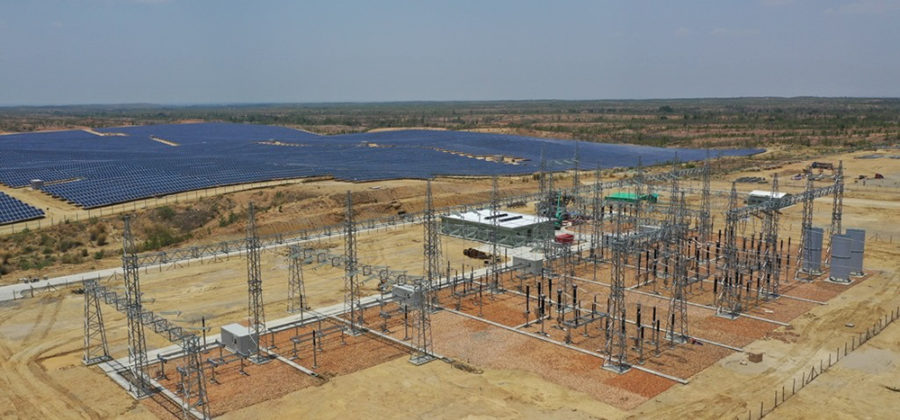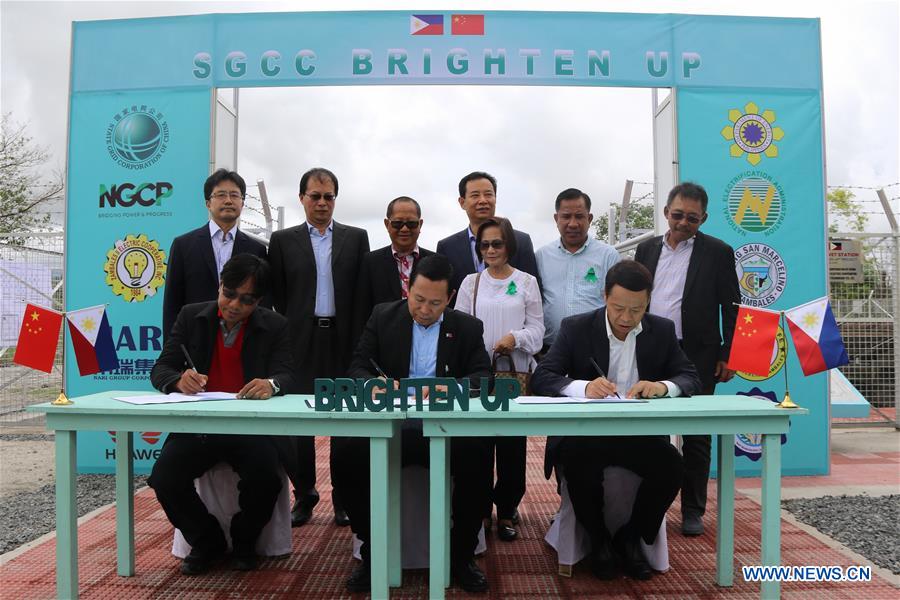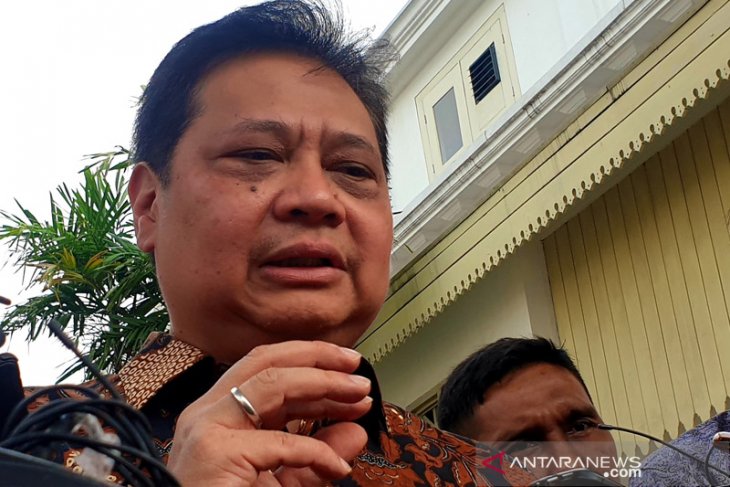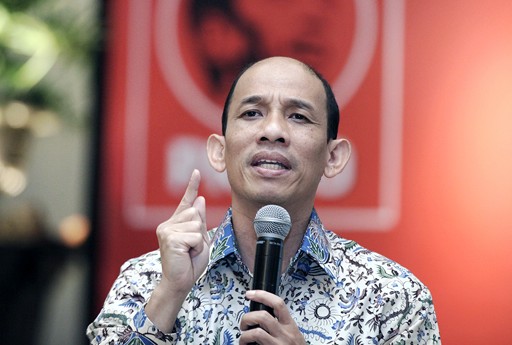In January 2018, the Ministry of Electricity and Energy took a big punt on imported liquefied natural gas. At a ceremony in Nay Pyi Taw on January 30, it signed “notices to proceed” with the sponsors of three LNG-to-power projects totalling almost 3,000 megawatts.
With Myanmar’s hydropower projects delayed and output from domestic gas fields declining, minister U Win Khaing has said these huge investments are necessary to meet Myanmar’s electricity needs over the next decade and beyond.
But Myanmar’s short-term needs are also critical, so the sponsors were given tight deadlines for completion, with the first electricity to be produced from mid-2020.
Eighteen months on, though, none of the three have met key project milestones, such as the signing of a power purchase agreement – let alone the start of construction.
And with power shortages beginning to bite in early May, the ministry announced plans for an emergency power tender to bring in 1,400MW of extra generating capacity in time for the 2020 hot season.
Mr Jeremy Mullins, country director at Vriens and Partners, a Southeast Asia-focused advisory firm, said it was too early to write off the LNG-to-power projects as failures.
“These barges or other temporary solutions will be helpful to provide the breathing space necessary to let the government develop a longer term strategy, including building permanent generation facilities,” he said.
Mullins said all three LNG-to-power projects have their own unique strengths and weaknesses. “It’s a Yangon electricity sector parlour game to guess which is the most likely to move forward,” he said. “It seems likely the projects will be built in phases and that some will move ahead more quickly than others.”
Guarantees and gas prices
Although each of the projects faces its own technical challenges, the major hold-up has been negotiations over the PPA, which sets out the key financial terms, including what the government will pay for the power produced.
“We had high hopes for these LNG-to-power projects,” said U Han Zaw, deputy director general of the Department of Electric Power Planning. “But there are some major problems … We are now negotiating the PPAs with the companies and the problems are in this stage.”
These negotiations are fraught for several reasons. The first is that electricity in Myanmar is heavily subsidised. Prices have not changed since April 2014 despite rapidly rising production costs, and the sector loses K630 billion a year – a sum that is set to rise rapidly unless there is reform on pricing.
The LNG projects will put even more upward pressure on electricity production costs, so the government is trying to secure the lowest possible price as it negotiates with the sponsors. However, the companies are concerned that if the price is too low, they’ll never be able to get the financing they need to make their project a reality.
It’s not just the kilowatt-hour price that’s proving contentious, Han Zaw said. The PPAs also have to address the question of LNG pricing. “Investors want a floating market price [for LNG] while we prefer a fixed price in the PPA. And investors are also demanding to be paid in dollars, but the government is standing firmly on its decision to pay in kyat,” he said. “These two issues have created a bottleneck for the negotiations.”
These are also long-term commitments. The government will be required to pay for the large amounts of power they generate for the next three decades or so, including the cost of the gas. The PPAs are therefore multi-billion-dollar commitments.
And Myanmar is a high-risk country – one with a track record of asset nationalisation, no less. What if one day the government decides that it can’t afford to keep buying the power from these plants? Or maybe a major gas field is discovered domestically; would the government then try to halt LNG imports? These are the questions that institutions considering lending to the LNG projects will ponder.
Because of the perceived risk, at least some of the project sponsors are seeking a sovereign guarantee – an ironclad commitment from the government that, whatever happens, it will pay up. Only, the government isn’t so keen to give them one.
“It’s natural for investors to seek a guarantee because they need it for project financing,” said one government official close to the negotiations. “The problem is that governments in Myanmar – not just this one, but previous ones too – have never given a guarantee like this to a company, and they are reluctant to start now.”
There are also differences within the government, due to competing interests and priorities. The Ministry of Electricity and Energy’s priority is to ensure adequate electricity supply, and it is more favourable to the terms requested by sponsors. However, the Ministry of Planning and Finance and the Central Bank of Myanmar are more focused on cost control and macroeconomic stability, and are playing hard-ball on the PPA currency and guarantees.
The International Monetary Fund has also recommended a cautious approach to sovereign guarantees and noted that some planned infrastructure projects “may create significant fiscal risks to the government”. Following its latest Article IV consultation, the IMF advised that the Ministry of Planning and Finance play a “gatekeeper role” both to stop projects that are not worthwhile or affordable, and in regard to the issuing of sovereign guarantees.
It also recommended that the government ensure competitive bidding and use model contracts – neither of which was employed for the three LNG projects, which were identified following a call for expressions of interest in 2016.
Sources in the government and private sector said that a major problem was the Ministry of Electricity and Energy’s unwillingness to share information with other ministries. “The ministry has an absolutely terrible reputation among other ministries,” said one source. “The minister and everyone below him in the Ministry of Electricity and Energy consistently refuse to explain their choices to other parts of the government and then just expect these ministries to hand over the money when prompted.”
Finally, these are big, complicated projects – more complicated than they should be, some argue, and were therefore set up to fail. The developers are being asked to build not only the LNG facilities but also the power plants and the transmission lines, which adds significantly to both the cost and the risk. “There is too much responsibility on the developer … so the risks for the developer are very high,” said one electricity industry source. “And these huge projects are happening in an environment where total revenue from the sector is not even US$1 billion a year. Without a sovereign guarantee, who will lend to them?”

Women sort dried fish on the beach at Mee Linn Gyaing, which in the coming years may be visited by 80,000 metric tonne liquefied natural gas tankers to provide fuel for a 1,390 megawatt power plant. (Nyein Su Wai Kyaw Soe | Frontier)
The dark horse
But not all of the developers are seeking a sovereign guarantee. And that might give one project in particular an advantage.
Myanmar’s Supreme Group and China’s Zhefu Holdings have proposed building a facility at Mee Linn Gyaing in Ayeyarwady Region that would include a 1,390MW power plant. More recently, China Huadian Corporation, one of the largest state-owned power generation companies in China, has joined the consortium as a technical partner. Swiss trading house Gunvor is also reportedly involved as a potential supplier of LNG.
Despite some technical challenges, Han Zaw was upbeat about the project’s prospects.
“Based on the negotiation with investors, the Mee Linn Gyaing project has the potential to move forward first because they are not asking for a sovereign guarantee,” Han Zaw said.
Supreme executive director U Htu Htu Aung confirmed to Frontier the consortium had not requested a sovereign guarantee, and indicated it would also be flexible on the currency used for payments. The terms of the notice to proceed specify that payment will be in US dollars or the equivalent in another currency, such as kyat. According to the NTP, the payment currency would be “based on the fiscal regime and availability of the foreign currency reserves”, Htu Htu Aung said.
He added that the PPA negotiations “will take some time” because these were the first thermal power generation projects in Myanmar in which investors had to provide the infrastructure and fuel. “It require[s] very detailed discussions to ensure that the project is beneficial for Myanmar,” he said.
The company has already completed technical and financial feasibility studies, an Environmental and Social Impact Assessment and public consultations, while design and engineering works are underway. “We are currently focusing on the negotiation of project agreements so that financial closing can be completed within a short time after PPA [is concluded],” Htu Htu Aung said. “We are still confident that the actual commencement of operations of power plants will be not be far off from the timeline mentioned in the Notice to Proceed.”
Mee Linn Gyaing is a completely greenfield site about 250 kilometres from Yangon. The project will include a 500kV transmission line to Hlaing Tharyar, on the outskirts of Yangon, but the first phase will only require a line to Pathein, where it will link up with the national grid.
U Win Htay, the Ayeyarwady Region Minister for Electricity, Industry and Transportation, said the regional government was “working hard to support the project”.
Negotiations to acquire land from residents in Mee Linn Gyaing for the project are nearly complete, he added.
“As it is the middle of the negotiation process, I can’t say too much. What I can say right now is that local residents also agree with the project.”
One unknown about Mee Linn Gyaing is whether it is included in the Belt and Road Initiative, Chinese President Xi Jinping’s signature foreign policy.
Myanmar and China have negotiated a China-Myanmar Economic Corridor agreement, but few details have been released about which projects have been included. China has reportedly proposed 37 “early harvest” projects, of which Myanmar has accepted only nine.
Another Supreme Group electricity project at Kyaukphyu in Rakhine State has been described by Myanmar state media as “an important project for the Myanmar-China Economic Corridor”.
The 135MW project, which will use gas from the Shwe field, also received a NTP in January 2018 from the Ministry of Electricity and Energy.
On the sidelines of the Belt and Road Forum in Beijing in late April, Supreme and fellow investor Sinohydro signed a letter of acknowledgement for the conclusion of PPA negotiations for the project. The PPA, which states that payment will be in kyat, is still waiting for final government approval.
Htu Htu Aung said he was not sure whether Mee Linn Gyaing was also a CMEC project because this would be discussed at bilateral meetings “at which we are not participants”.
He added, “Being part of the BRI/CMEC can benefit the project in terms of support of both governments and more competitive financing due to bilateral recognition of the importance of the project at national strategic level.”
Raising funds
Closer to Yangon, the LNG-to-power project proposed by Thai-listed firm TTCL also appears to be making some progress.
On June 4, the company announced in state papers that it had prepared environmental assessments for the project and would hold a second round of public consultations on June 12, 13 and 14 in Ahlone, Dala and Thanlyin townships, respectively, “to present the preliminary findings and collect feedback”.
As with the other two projects, TTCL has faced challenges negotiating the PPA with the Ministry of Electricity and Energy for the Ahlone LNG project.
But at the June 12 meeting, TTCL Myanmar Power Co Ltd general manager U Htet Aung Mon told Frontier the company was making progress and expected a deal to be reached by the end of the year.
“We see some progress in the PPA negotiations; the government seems to agree with payment in both US dollars and kyats,” he said. “We are hoping to conclude the PPA negotiations this year, then we could implement the project at full speed.”
He said that the cost of the project had also risen significantly because of Myanma Port Authority objections to the company’s initial plan.
TTCL told shareholders in January 2018 that the project’s estimated cost was $350 million, but more recently has advised that the likely cost would now be $620 million to $640 million.
Under the original proposal, TCLL was to deploy a floating storage and regasification unit on the Yangon River near its existing Ahlone power plant, and build 22 kilometres of transmission lines and 16km of gas pipelines. The plant would have been 356 megawatts.
“Instead of the FSRU, we will build an LNG terminal in Dala Township and a 24km-long underground LNG pipeline,” he said.
The pipeline from the terminal to the Ahlone plant will pass under the Twante Canal and Seikgyikanaungto port before crossing the Yangon River. The project also includes a 28km, 230kV transmission line to Hlaing Tharyar, while the plant has been expanded to 388MW.
“The cost would be higher than the original plan,” he said.
Htet Aung Mon declined to discuss how the project might be financed if the government stood by its refusal to give sovereign guarantees for any of three LNG-to-power projects that received notices to proceed in January 2018.
“I have no knowledge on it as it is handled directly by the TTCL in Bangkok,” he said.
The project still has some clear advantages. It’s significantly smaller than the Mee Linn Gyaing or Kanbauk in scope and price and is close to the major source of electricity demand.
The key hurdle is the low draught of the Yangon River. The LNG will likely have to be transhipped to the terminal from a tanker stationed further away, which will add to the operating costs. The river is also inaccessible to larger vessels at low tide and night time, which could hamper operations.
At the company’s annual general meeting in April, Ms Suratana Trinratana, TTCL’s senior vice president for Myanmar projects, said she expects the Yangon gas project to start in the fourth quarter of this year or first quarter of the next.
Financing the project has not been easy for the company. TTCL, which was formed in 1985 as a joint venture between Toyo Engineering Corporation of Japan and Italian-Thai Development of Thailand and listed on the Stock Exchange of Thailand in 2008, has a market capitalisation of only five billion baht, or about US$160 million. Its high debt load and weak operating performance in recent years prompted the Thai Rating and Information Service to downgrade its company rating to BBB- in October 2018.
Originally an engineering, procurement and construction (EPC) contractor, TTCL has over the past decade shifted its focus increasingly to power generation. It has placed its power assets, including the Ahlone LNG project, in a Singapore-based holding company, and plans to spin off the company into a separate listed stock, in which TTCL would retain at least 60 percent. The listing, which was originally planned for Singapore but now seems likely to take place in Thailand, has been delayed several times. But Suratana said the company expected it to take place next year because TTCL needs the funds for the Yangon LNG project.
In the meantime, TTCL is also seeking financing from banks or strategic partners, and raising funds through the sale of assets. In May, it confirmed the sale of 57 percent of a subsidiary that operates an existing 121MW gas-fired plant in Ahlone Township to two Japanese companies for $85 million. At the TTCL annual general meeting, officials said the funds raised from the sale would be used for the LNG project, and that they needed around $200 million in total to finance the equity portion of the project. They also revealed that TTCL would get the EPC contract for the project, which is worth about $470 million, and that the anticipated internal rate of return was 13 percent.

TTCL Myanmar Power Co Ltd general manager U Htet Aung Mon speaks at a consultation in Ahlone on June 12 as part of the Environmental and Social Impact Assessment for its LNG project. (Thuya Zaw | Frontier)
Down south
French company Total has a long – and often controversial – history in Myanmar. Under military rule, the billions generated by its Yadana gas field helped keep the junta afloat.
Its well-established presence in Myanmar gave it an advantage over other Western firms, and it leveraged this to secure an NTP for the Kanbauk LNG-to-power project as part of a consortium with German company Siemens. The project, in Tanintharyi Region’s Yebyu Township, has some major advantages. Reusing existing infrastructure from Yadana would enable it to minimise costs and the project would also facilitate further gas exports to Thailand, which buys most of the production from Yadana.
Total E&P Myanmar general manager Mr Romaric Roignan told Frontier that a “very significant amount” of work had been completed since January 2018, including feasibility and technical studies in a range of areas, and environmental and social assessments. The company is designing a tender process for the FSRU and also received initial bids from potential contractors. Total’s corporate social responsibility team is engaging with communities and 259 public consultations were held last year, he said.
But the location is a major challenge: Kanbauk is 550km from Yangon. To get the power to where it’s most needed, the consortium agreed to build about 450km of high-voltage (500kV) transmission lines from Kanbauk to Payagyi in Bago Region. That alone could cost anywhere from $500 million to $1 billion – a significant proportion of the total cost of the project, which was initially reported as $2.1 billion.
Several other issues suggest Kanbauk may be the least likely of the three projects to progress, at least in the short term. A spokesperson for Siemens confirmed that negotiations on financial terms, such as the price the government would pay for LNG and “guarantees” for the project, had delayed implementation. For the consortium, the objective is to ensure the project agreements are “attractive for future investors and financiers”, the spokesperson said.
Because of the roadblock on PPA negotiations, the consortium has proposed scaling back the first phase of the project to remove the 500kV transmission line. The plant would be only 400MW and power would instead be transmitted to Yangon via a 230kV line built using a soft loan from the Asian Development Bank.
“The project is being considered now under a different scheme and size with several phases in order to leverage the future 230kV transmission line planned by MoEE in the south of Myanmar,” the Siemens spokesperson confirmed.
A government official said the ministry was opposed to any reduction in the scale of the project.
“The main [reason for] this project is that we don’t have a southern grid to connect [Tanintharyi Region] to the national grid. If they are not willing to build [a high-voltage] transmission line as per our previous agreement, the project would likely be cancelled,” the official said.
Since the NTP was signed, Siemens also appears to have reduced its role in the consortium, with the company only planning to provide technology and expertise.
Han Zaw said that until it received the proposal to scale back the project the government had expected both Total and Siemens would invest in Kanbauk. “We now know that Siemens will not make any investment in the project, but is still involved in the consortium with its technology,” said Han Zaw.
On May 7, Siemens announced that it would spin off its power assets into a new company and divest most of its holdings, creating a further complication.
The Siemens spokesperson said the company was leading the feasibility study on the power generation, power transmission and grid stability aspects of the project. “Siemens has left the leading development role to our partner who is best placed to discuss the gas commercial topics,” the spokesperson said. “Recently Total is leading commercial discussion with the Energy ministry while Siemens remains as technology provider for electrical portions of the project.”
Total, meanwhile, is heavily invested in offshore gas production and exploration in Myanmar, which may reduce its appetite for taking on such a large project at the same time.
While it continues to drill around the Yadana field in an effort to shore up production, it is also part of the consortium that has made several discoveries in the A-6 block off the Ayeyarwady Region coast. Since the LNG project was announced, appraisal wells in A-6 have indicated reserves of 2-3 trillion cubic feet, which should make it commercially viable. Later this year Total also plans to drill exploration wells in the MD-7 block, which it shares with Thailand’s PTTEP.
But Roignan dismissed suggestions Total was losing interest in Kanbauk. He said “significant progress” was being made on commercial negotiations with the government and the consortium was examining ways in which it could reduce the electricity price. One option was “leveraging potential regional marketing synergies”, Roignan said – an apparent reference to gas re-exports to Thailand.
“Total remains fully committed to collaborate with the government of Myanmar to develop and implement the Kanbauk LNG-to-power project in a mutually beneficial way for all the project’s stakeholders and in the best interests of Myanmar,” he said.











